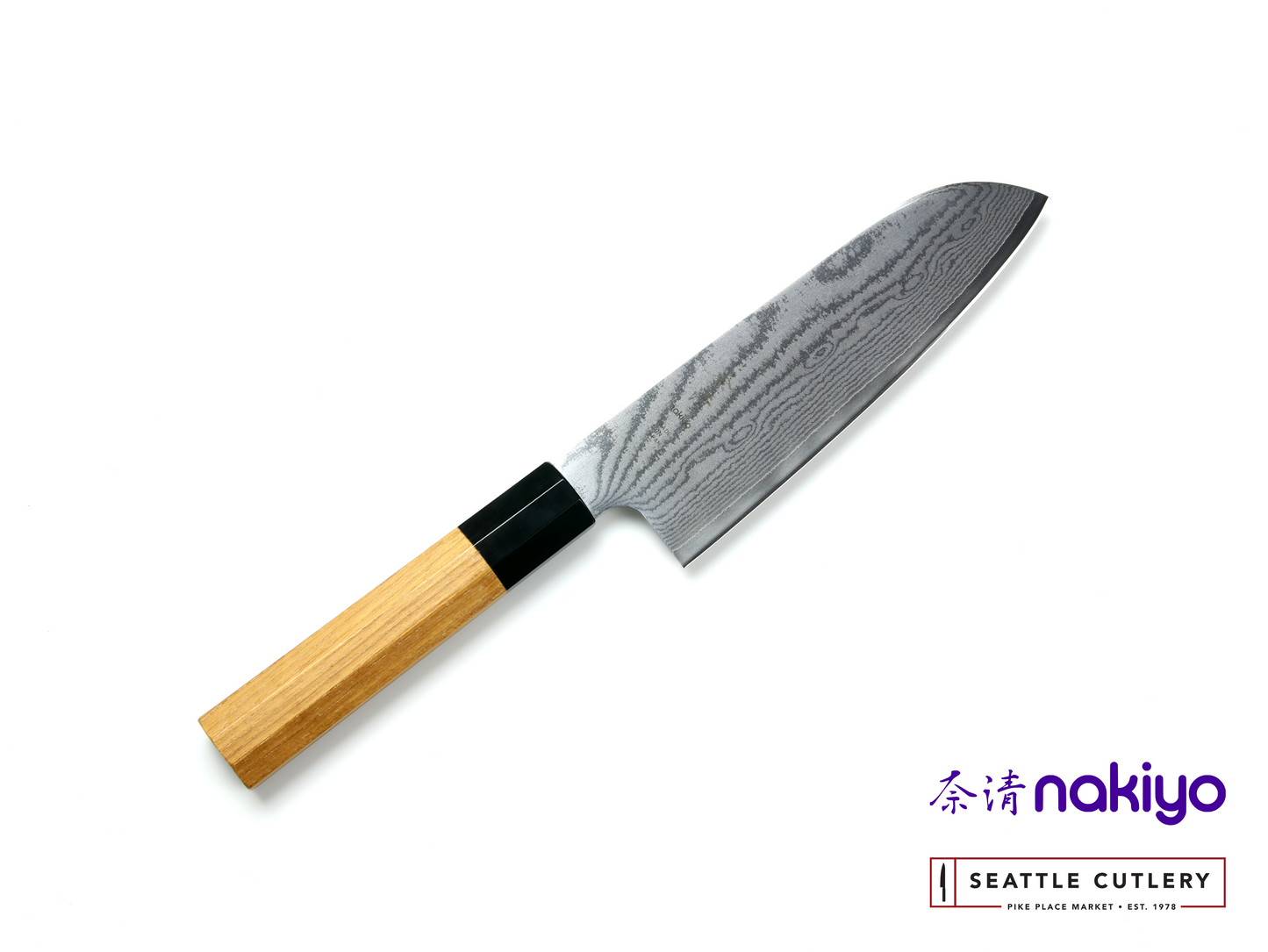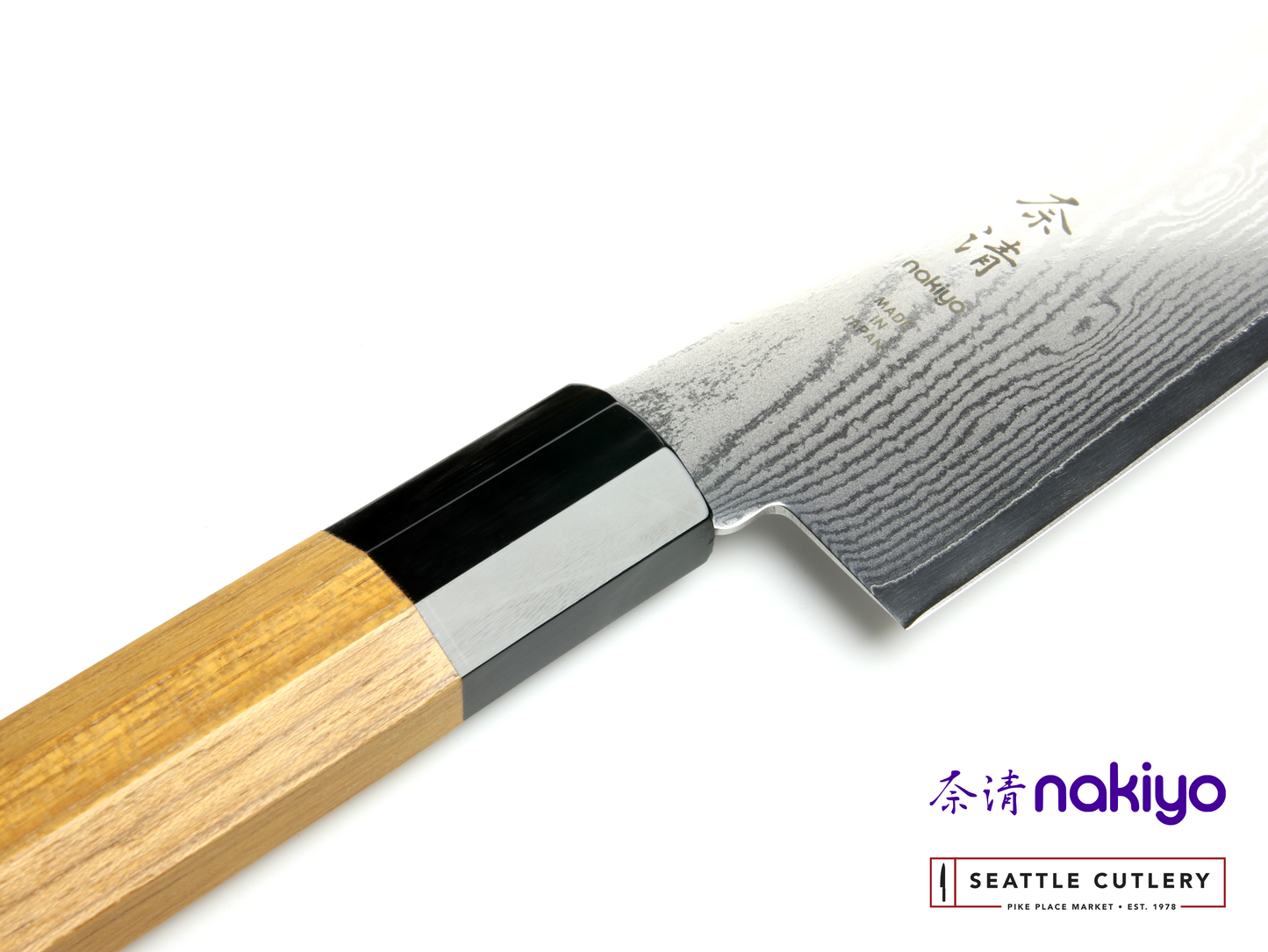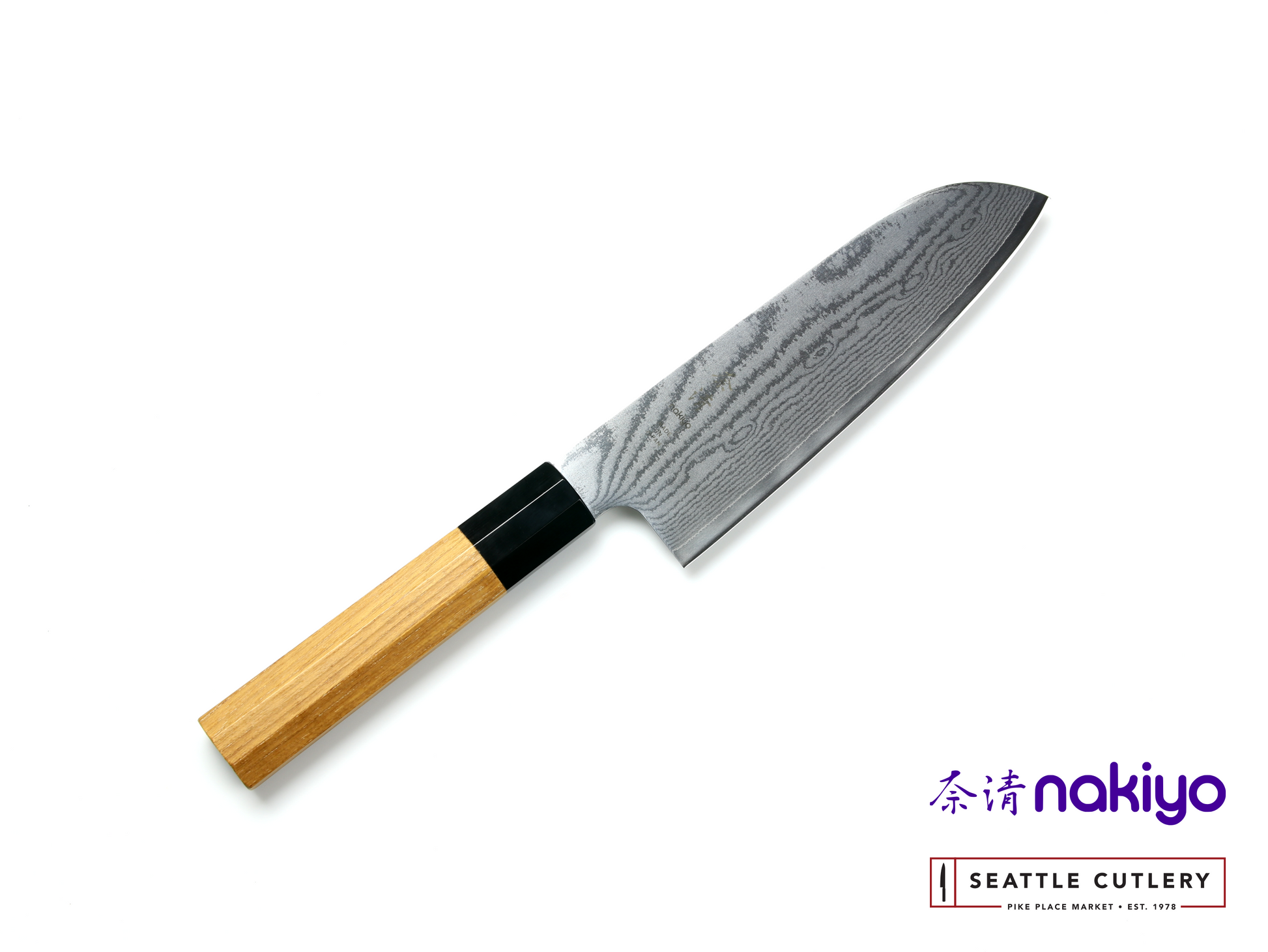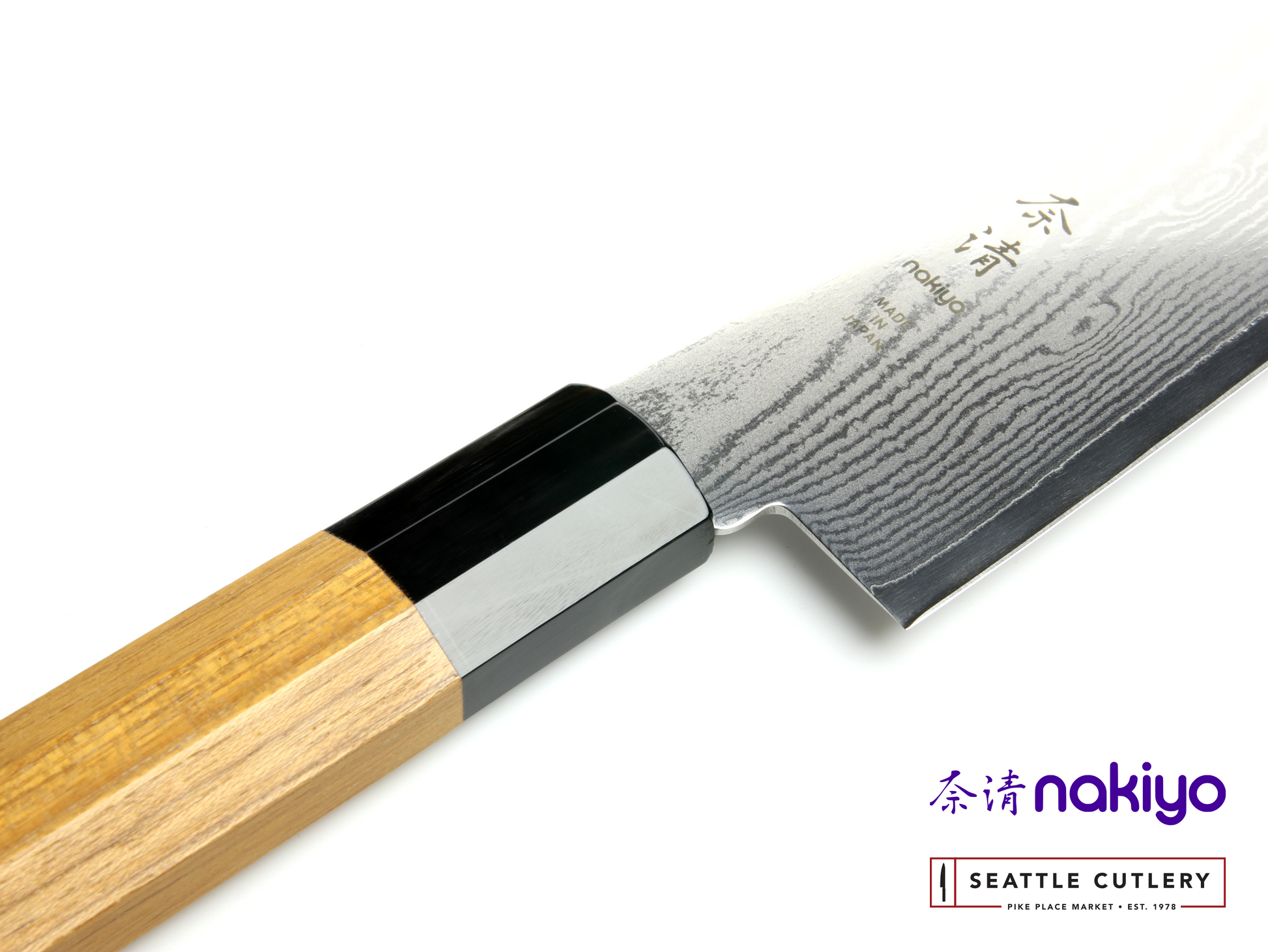Nakiyo Teak Damascus Santoku
Nakiyo Teak Damascus Santoku
In stock
Couldn't load pickup availability
Share
The santoku bōchō (三徳包丁) is a Japanese chef’s knife that combines the best features of the gyuto, the Western-pattern chef’s knife, and the nakiri, the Japanese vegetable knife. Its name, which means “knife of three virtues,” can refer either to its ability to cut meat, fish, and vegetables, or to the three functions of slicing, chopping, and dicing. Though developed in Japan, the Santoku has recently become a popular addition to many Western kitchens.
Function
As its name suggests, the santoku is a capable and versatile knife that can handle a majority of common tasks in the kitchen. Its broad blade and gently curving edge, much like the nakiri, allows it to chop and dice produce more easily and comfortably than the gyuto. The downward-curving tip, a compromise between the square end of the nakiri and the narrow tip of the gyuto, facilitates fine cutting without sacrificing any chopping power. The santoku is a shorter knife than the typical gyuto.
Form
Damascus steel was first developed in India over 2,000 years ago and quickly established a reputation not only for its beauty, but also as one of the greatest metallurgical innovations in history. Swords forged in Persia and sold in the Syrian city of Damascus inspired legends of their ability to slice through a gun barrel or part a hair falling across the blade. Although the ancient technique was lost to history around 1900, modern metallurgists have succeeded in reproducing the effect with state-of-the-art alloys to bring performance to the next level.
Nakiyo Damascus blades are forged from 63-layer (all larger knives) or 37-layer (paring, peeling, and petty knives) Damascus steel, which is made by repeatedly folding and forge welding two stainless steels with different carbon contents. The resulting material bears the elegant, wavelike pattern produced by its many fine layers—a testament to its strength, flexibility, and durability. This Damascus envelops a core of harder VG-10 cobalt alloy steel, a high-carbon stainless steel developed in Japan. Hardened to a Rockwell hardness of 62, it accommodates a long-lasting, razor-sharp edge.
The lightweight handle is crafted from strong and durable teak (Tectona grandis) wood, which provides a secure grip without upsetting the knife’s balance. The wood, among the most water-resistant species in the world, is secured and accented by a ferrule (collar) of black water buffalo horn. Its octagonal profile guarantees a firm hold and is suitable for both right- and left-handed users.
Specifications
Specifications
Length
165 mm (6.5") blade, 305 mm (12.0") overall
Weight
130 g (4.6 oz)
Blade Material
63-layer Damascus with VG10 cobalt alloy core
Edge
Double bevel
Handle Material
Solid teak wood with buffalo horn ferrule
Handle Shape
Octagonal
Warranty
Warranty
All Nakiyo, Tojiro, Sabatier, and SeaCut products sold by Seattle Cutlery are covered by our lifetime warranty against defects in materials and workmanship. If you follow our care and maintenance advice and your knife ever fails during honest use, we will gladly repair or replace it. Our warranty does not cover regular wear and tear or damage due to misuse, but we may still be able to help in some cases.
Returns
Returns
Any item in original, unused condition may be returned within 30 days for any reason. Shipping charges are non-refundable. Read our full refund policy here.


Great price for a great knife
This is now my fanciest and favorite knife. So light, so sharp and so easy to work with. Chopping produce for dinner is very zen for me, and this knife is so much fun!! Love it!!
Cuts geest
This is the second Nakiyo Knife I have purchased from Seatle Cutlery. I am very pleased with the knives and the service. I am always greated when I am in town visiting and would highly recomend visiting Seatle Cutlery if you are in the market for a great knife.


